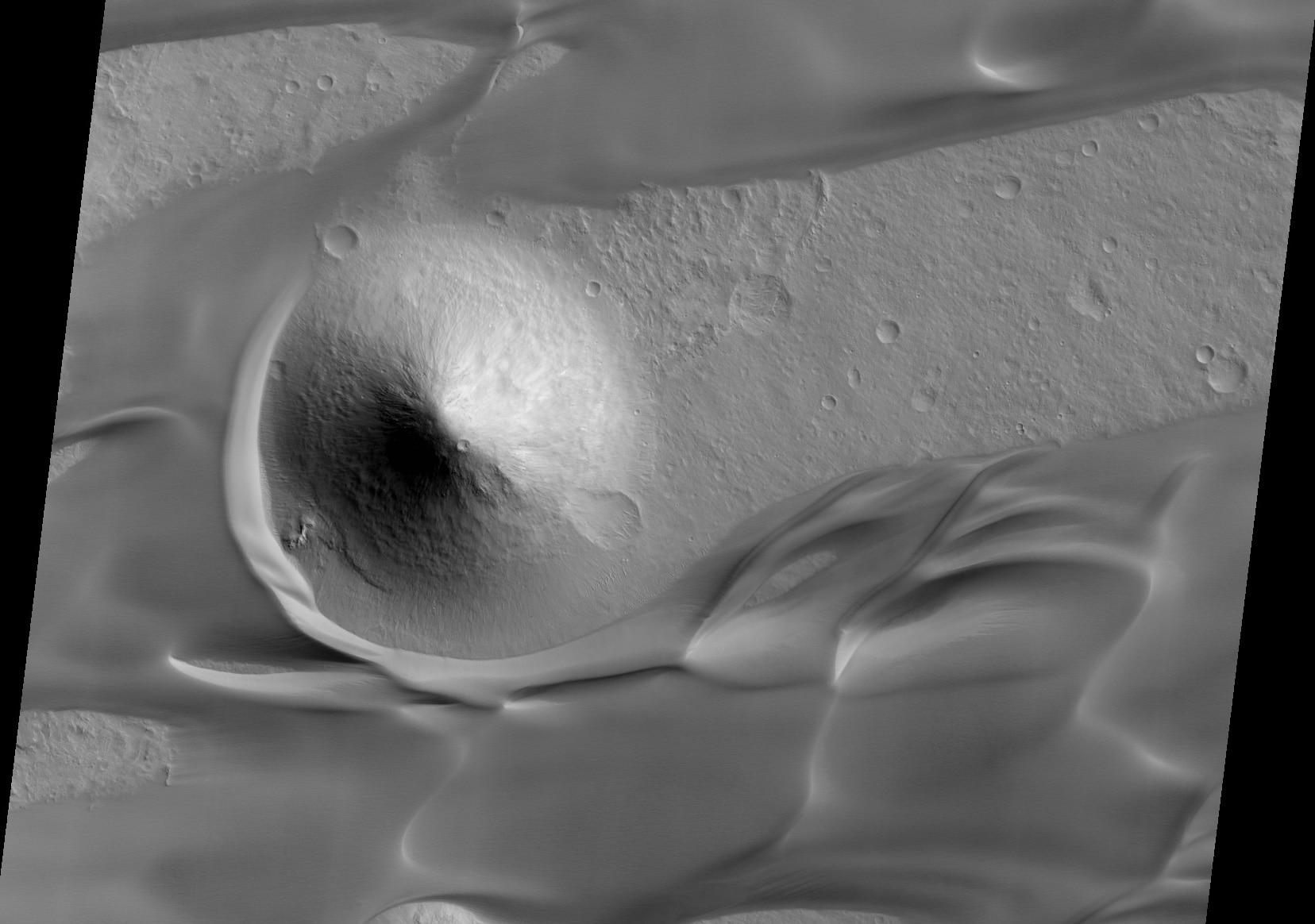Create a free profile to get unlimited access to exclusive videos, sweepstakes, and more!
A Giant Martian Cone Defies the Wind

Mars is seriously pretty.
That shot, taken by the HiRISE camera on Mars Reconnaissance Orbiter, shows a towering cone-shaped hill in a sand dune field.
First of all, just take a moment to think about that. This is a photo of a weird geological feature in the middle of a field of blowing dunes on another planet.
That never, ever gets old.
I love the feel of this photo. The wind blows from the left and flows around the unnamed dome. As it does, sand piles up on the windward side and wraps around both sides of the dome. Because the wind is focused by the shape of the hill, it blows with some force behind it, strong enough to clear the sand away and reveal the rocky surface below. The craters and other features look sharp compared with the dunes themselves, which are sculpted into fantastic flowing shapes by the aeolian forces.
So just what is that dome? My first thought is that it was volcanic. That’s possible, but it’s hard to say. I talked to Ross Beyer, a planetary scientist who also writes captions for HiRISE images, including this one. He mentioned that there are other features poking up nearby, and none exhibit the dome’s striking circular symmetry.
Over time, hills poking up tend to be eroded by winds, and obviously winds are at work here. But the shape would be unusual; I’d expect it to be more teardrop-shaped, like a sandbar. That’s more typical of erosion from winds that come persistently from one direction. If you look at the dome’s flanks, you’ll see lots of striations, which indicate “mass wasting”: landslides. That makes it hard to say what the original shape of this hill was.
Beyer also said a lot of the features in this region are sedimentary sandstone. This is in a spot called Ganges Chasma, a deep canyon off one end of the monstrous Valles Marineris. Long ago, this whole area was under water—Ganges Chasma probably formed from catastrophic flooding—and the floor is deposited sandstone (where I live in Colorado has a similar but somewhat more gentle history). Then the water dried up, the winds picked up, and erosion began.
Beyer noted the dome seems to have a cap on it; that could be tougher rock that resists erosion, which may have helped shaped this feature. That reminds me of hoodoos, those weird cylindrical spires in Arizona you’ve seen pictures of a million times (think any background in a Road Runner cartoon).
Whatever it is, it’s pretty old. It has craters on its flanks, which means it’s been around long enough to get hit a few times by small asteroids. Tens of millions of years, I’d wager, at the very least. Probably a whole lot older than that.
This image has quickly become one of my favorites, just for its sheer beauty. I love the contrast of liquid softness and literally imposing rock. The theme of symmetry runs strong as well.
Oh, Mars. We may never know what this feature is until we go there and poke at it with a geologist’s hammer. The list of Martian geologic formations that need such treatment is long indeed. I wonder if, generations hence, some young person will stand on the apex of this hill, look around, and wonder when this view was first discovered …


























